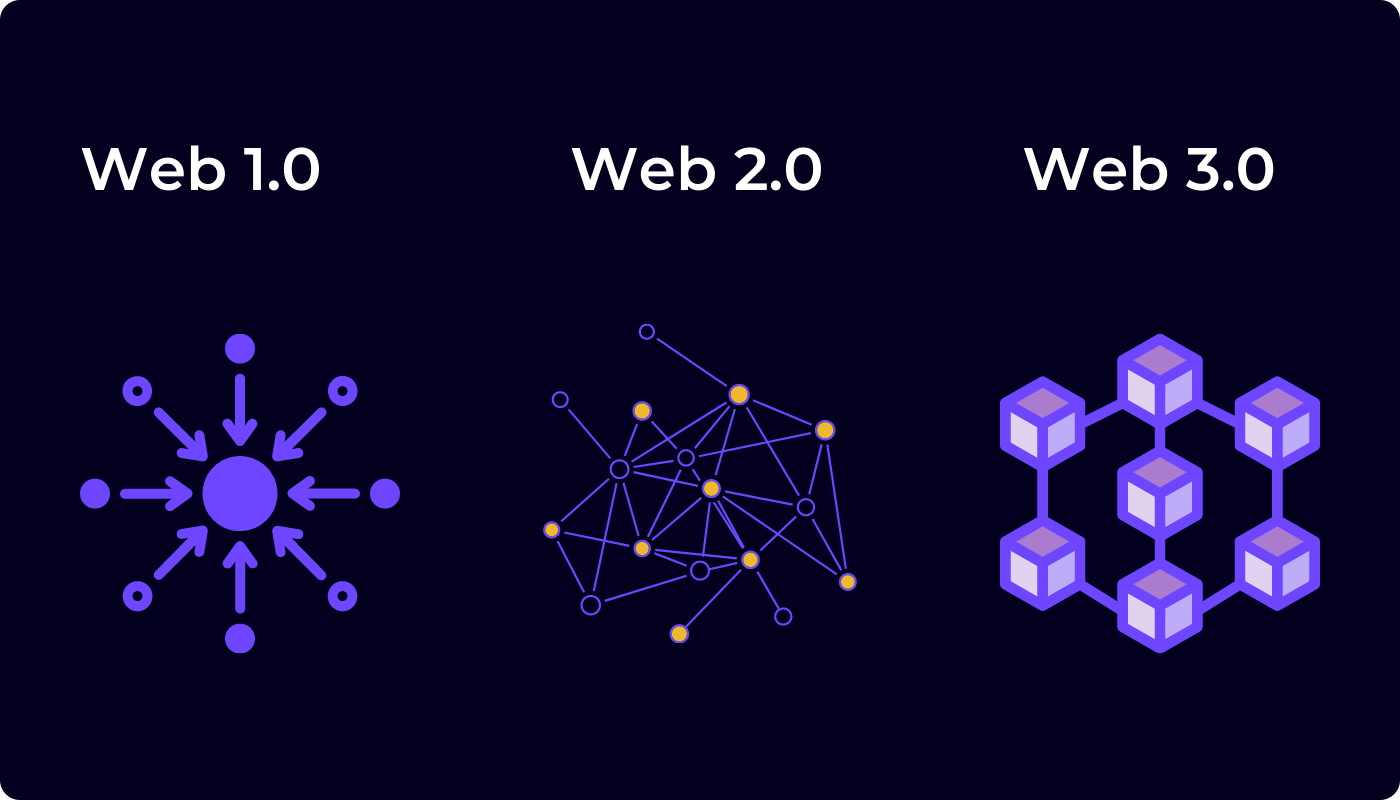Undoubtedly, the birth of the Internet has given rise to what is arguably one of the most significant technological revolutions ever known. The Internet has broken down geographical barriers and made information more accessible - it's connected humans in previously unimaginable ways.
Now, as we find ourselves at the beginning of what looks like another "Roaring 20s," we are again at the doorway into a new era for humanity regarding technology and communication on this World Wide Web.
For about ten years now, companies old and new have laid the foundations for next-generation internet technologies such as blockchain, machine learning, virtual reality and artificial intelligence.
But First, What is Web 3.0?
At the beginning of the web, there was only Web 1.0 - a version that consisted of static HTML documents, and user interaction wasn't possible through internet connection either. In 1999, a new iteration began to take shape, allowing individuals to participate in an interactive social web that eventually gave rise to successful corporations like Facebook or Twitter and YouTube, emphasizing user-generated content and interoperability between sites and applications.
With this kind of evolution, new businesses and some business models were born, from social networks to mobile apps. Web 2.0 had introduced new income streams that were not possible in the days of Web 1.0.
Presently, after over twenty years, a considerably more special variant of the Internet hopes to dominate.
Web 3.0 is a term that refers to the next generation of the Internet and one of its most groundbreaking concepts: decentralization.
The idea is that individuals will control their digital identities without relying on centralized entities such as Google or Facebook. It's a new way of living in the digital age where we can take back our data and personal information from corporations who want to monetize it for profit.
One popular example of a Web 3.0 application would be your MetaMask wallet, which offers you complete control over your funds via a browser extension or mobile app. There are different aspects to decentralization that various Web.3.0 crypto projects offer.
For example, Livepeer allows for decentralized video bandwidth sharing through the Ethereum blockchain, and the Helium network allows for decentralized wireless data sharing from its IoT nodes. Helium is an example of an IoT implementation for Web3 tech. A more conventional WEB3 application is API3, a decentralized API platform allowing for the creation of trustless applications that interact with the web.
How to Invest in 3.0?
When it comes to investing in Web 3.0, there are a few ways you can go about doing it:
- Investing in the cryptocurrency space
- Investing in blockchain startups
- Investing in decentralized applications (DApps)
Pros of investing in cryptocurrency
This is one of the most popular methods for investors looking to get into Web 3.0. With cryptocurrencies, you can invest in coins like Bitcoin and Ethereum, which have seen huge growth over the last few years. And it's not just about buying - you can also trade them on cryptocurrency exchanges.
This is a good strategy to make quick investments with high potential returns.
The biggest downside of this option is that it can be volatile and unpredictable because so many people are using cryptocurrencies. As an investor, your profits could be severely impacted if you're not careful.
Pros of investing in blockchain startups
Blockchain startups are one of the hottest new investment opportunities on the market right now - but only if they're done correctly! It's important to do your research before investing in any company or startup, especially for blockchain companies, as many are scams that will rob you of your time and money.
However, by researching these companies thoroughly and following their progress closely while keeping up with industry news around them, you stand a better chance at making sound investments that will pay off over time.
Pros of investing in decentralized applications (DApps)
A third party does not manage the decentralized application (DApp). It's an app that runs on blockchains and P2P networks which any individual or company cannot control, and it has the following features:
Points of Failure
There is no single point of failure since decentralized applications do not rely on a single central server to handle processes.
Centralized app: If the server fails, the entire network will offline. This makes centralized apps more vulnerable because they have only one point of failure. No one can use the application until the error is fixed
Data security
Security issues due to centralized data storage: In comparison with decentralized apps, there is no risk of being hacked into since content does not reside in just one location but rather distributed throughout many different nodes/servers across the Internet.
User Privacy: A decentralized application (DApp) operates on a P2P network of computers without third-party servers. DApps respect user privacy by preventing users from providing their real identities while browsing or interacting with them.
In A Nutshell
In essence, any centralized platform available on the current web 2.0 will have been considered an implementation of web 3.0 technology if its developers' actions completely decentralized it.
